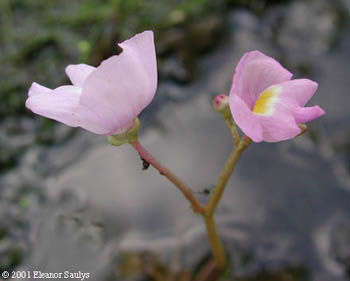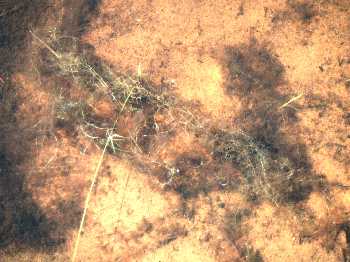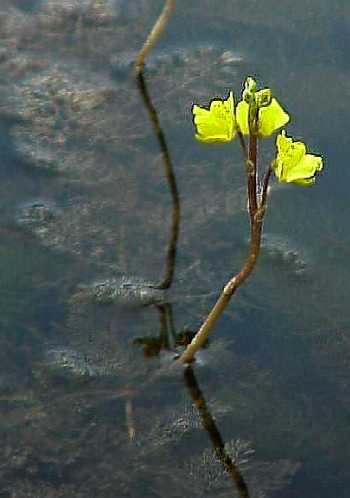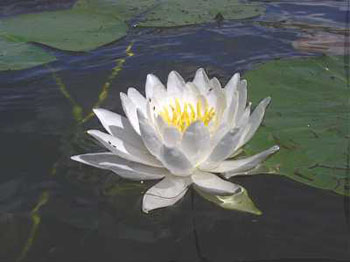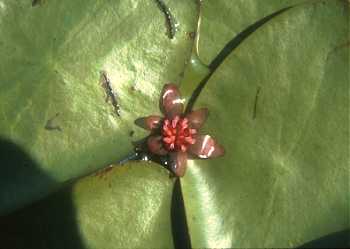
|
Family - Cyperaceae Eleocharis: Greek elos for "marsh" and charis for grace, referring to marsh plant robbinsii: for James Watson Robbins (1801-1879) Status: Special Concern Plant: perennial erect 9-30" semi-aquatic, emergent sedge |
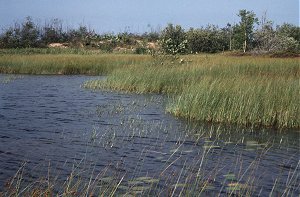 |
|
|
|
|
Status: Special Concern Plant: annual/perennial floating aquatic Origin: native |
Family - Lentibulariaceae Utricularia: from Latin utriculus, "a small bag or bladder,"
the common name of which is bladderwort See the common bladderwort below for more information.
|
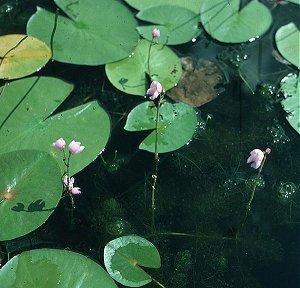 |
|
|
|
|
|
Family - Haloragaceae Status: Special Concern Plant: perennial aquatic Identification: |
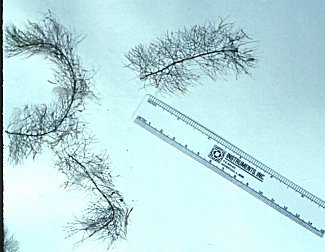 |
|
|
|
|
|
Family - Lentibulariaceae Utricularia: from Latin utriculus, "a small
bag or bladder," the common name of which is bladderwort Status: Special Concern Plant: annual/perennial floating aquatic |
|
|
|
|
Pontideria cordata Pontederia: for Pontedera, professor at Padua
in 18th century Status: Native Plant: perennial erect 1'-3.5' emergent semi-aquatic;
spreading colonies; flowers open for only 1 day Pickerel-weed is a native herb found in shallow water (up to 1 m) and marshy borders of lakes, ponds and slow rivers, often in large colonies. Emergent parts are up to 1 m tall. It requires clear water. Prior to emergence a rosette of leaves grows on the bottom and dies if the water is very murky. Leaves have a long petiole, and usually a firm broadly heart-shaped blade to 18 cm. A narrow leaved form is rare. Most leaves arise from the base of the plant. Inflorescence is a crowded spike, to 10 cm long, on a long stalk arising from the rhizome. Flowers are violet to white, 2-lipped, with each of the lips 3-lobed. Blooms from late June to September. Origin of the Name: Pontederia, for Guillo Pontedera, former Professor of Botany at Padua 1688-1757; cordata: L. cordis, heart, refers to the heart-shaped leaves Range: a New World plant, N.S. to Ont and MN, s. to S. Amer. WI Range: Statewide, less common northward Common associates: Yellow and white water lilies, bulrushes |
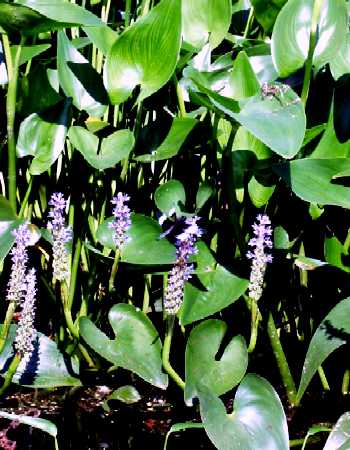 |
|
|
|
|
Family - Lentibulariaceae Utricularia: from Latin utriculus, "a small
bag or bladder," the common name of which is bladderwort Status: Native Plant: perennial floating aquatic Wisconsin has eight species of bladderworts -- carnivorous perennial plants of wet and aquatic sites with flowers that resemble snapdragons. Common bladderwort -- much more common than any of the other species -- is a free-floating plant found in shallow still water of ponds and marshes. Patches can cover large areas with emergent bright yellow flowers in July and early August. Its floating leaves are alternate and finely branched. The leaf segments are round in cross section and become progressively thinner with each branching. The leaf segments carry small bladders, about 3 mm across, that trap prey like mosquito larvae and protozoans. |
|
|
The bladders have glands inside that absorb water and pass it through the bladder walls to create a negative pressure inside. At the entrance to the bladder is a flap-like hinged door and glands that secrete a sugary mucus that attracts prey. When the prey brush against small hairs near the trap door, the tension on the door seal breaks and the prey is swept into the trap with a rush of water. Enzymes inside the bladder then digest the food and the bladders establish negative pressure again. The bright yellow flowers, 1 to 2 cm, are on a stem up to 20 cm long held above the water surface. Each flower has an upper lip, with two lobes, and a lower lip with three lobes. The floral tube is prolonged into a spur that holds nectar. The plant is branched in several directions at the base of each flower stalk. This forms a base that keeps the flower upright. Plants overwinter by forming winter buds or turions in late summer. These are masses of tightly compacted leaves that sink to the bottom when the rest of the plant dies in fall. In spring, the winter buds expand, fill with air, rise to the surface and start new plants. The water crowfoots (Ranunculus flabellaris and R. longirostris) also have finely branched alternate leaves but they lack bladders and bloom in the late spring. Similar free-floating uncommon bladderworts have flattened alternate leaves (U. intermedia, U. minor), bladders on separate segments from the leaves (U. intermedia), much smaller flowers (U. minor, U. geminiscapa), or whorled leaves and purple flowers (U. purpurea). |
|
|
|
|
|
Bluejoint (Calamagrostis canadensis) Calamagrostis: from Greek calamos for "reed"
and agrostis for "grass" Status: Native Plant: perennial grass Family: Grass (Poaceae) |
|
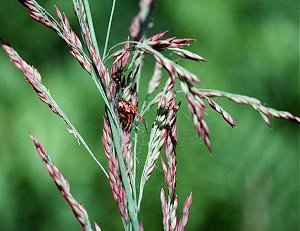 |
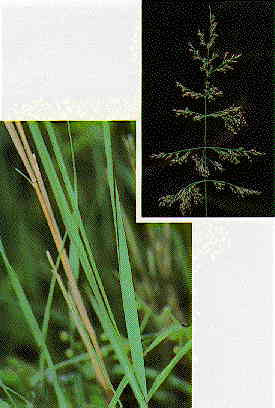 |
|
|
|
|
Family Nymphaeaceae Nuphar: ultimately from the Persian word nufar Status: Native Plant: perennial floating 2"-6" aquatic |
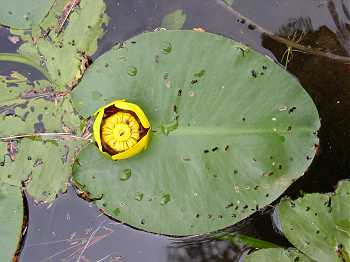 |
|
|
|
|
|
Family Nymphaeaceae Nymphaea: Greek and Roman mythology probably referring
to attractive and playful water nymphs of the same habitat Status: Native Plant: perennial aquatic |
|
|
|
|
Family Plantaginaceae Littorella: from litus or littus for "shore",
referring to habitat Status: Native (A synonym is listed as Special
Concern by WI DNR) Plant: perennial submersed aquatic |
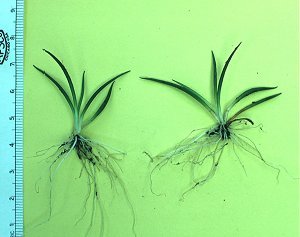 |
|
|
|
|
|
Family Cabombaceae Brasenia: name obscure Status: Native Plant: perennial floating aquatic |
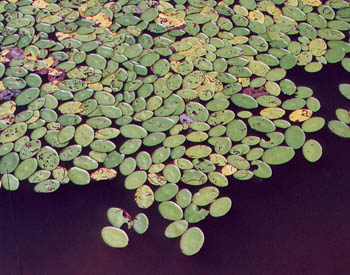 |
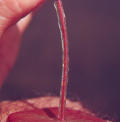 |
Loon Lake
info@loon-lake.org
